Forming bushes correctly: do low-growing tomatoes plant and what varieties do not require this stage
Despite the abundance of tomatoes on store shelves and markets, many people continue to grow tomatoes themselves. And this is understandable - your own food from the garden is both tastier and healthier.
Some gardeners prefer open ground, others prefer greenhouses, and still others prefer home window sills. And if there are special low-growing varieties for growing tomatoes in an apartment, then on your own plot the choice of seed material for cultivating short tomatoes is not so obvious. In addition, not all gardeners know whether it is necessary to remove stepsons from low-growing bushes.
From the article you will learn whether it is necessary to plant undersized varieties for greenhouses and open ground, and how to do it correctly.
What is stepsoning
Stepchildren are lateral processes on the stem that grow between the tomato trunk and the leaf, in the axils. Pinching is the removal of these processes.
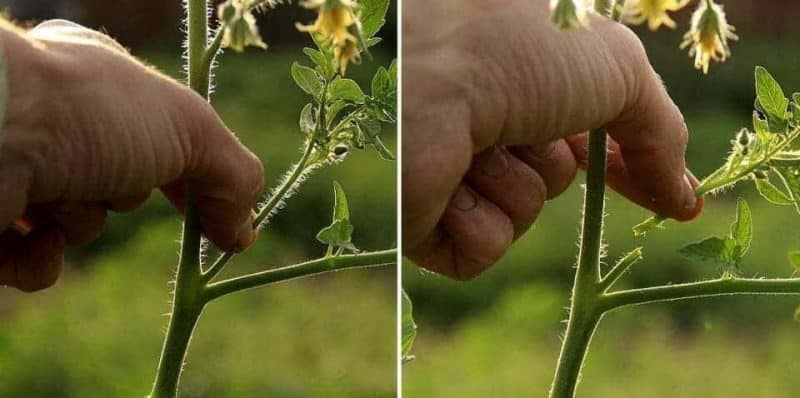
There are two ways to perform the procedure:
- Hands in rubber gloves. The stepson is swung from one side to the other until it comes off. This is done in the first half of the day - at this time the stems are more juicy, and there is also time to close the wound.
- With a sharp knife or scissors. They cut with precise movements, when moving to another process, treat the instrument with a disinfectant solution (1% bleach, 1% potassium permanganate or a weak solution of potassium permanganate).To prevent the growth of new stepsons, 1.5 cm of the shoot is left in this place. Cut stems are removed from the greenhouse to avoid infection.
Remove the shoots before they reach 5 cm, otherwise this will lead to injury to the tomato and reduced yield.
There is no practical benefit from stepchildren. By removing them, you direct beneficial microelements into flowers and fruits. If this is not done, the plant will begin to “fatten”, and the quality and quantity of the harvest will decrease.
There are 2 types of pinching of low-growing tomatoes:
- Stepsoning in two stems. One of the strongest stepsons is left, the rest are removed.
- Pruning into three stems. One stem and two stepsons are left. The strongest shoot from the lower inflorescences and another one next to it are selected.
It is necessary to distinguish the stepson from the stem:
- leaves grow on the stepson, flower ovaries immediately appear on the stem;
- the stepson grows from the axils, the new stem grows from the main one.
Pinching is carried out throughout the life of the plant.
Features of growing low-growing tomatoes
Low-growing tomatoes, or determinate ones, are loved for their early ripening, they produce few offspring and ripen together. The planting of low-growing tomatoes takes place in 2 or 3 stems. This improves the quality and quantity of fruits. The less nutrients are spent on the leaves, the more will go into the fruits.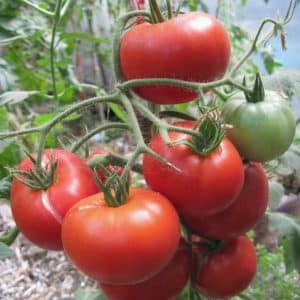
With a large number of shoots and leaves, it is difficult to harvest without damaging the plants. You end up with real thickets that you have to wade through.
Also, don’t forget about tying up the tomatoes. With good care, the fruits turn out to be quite heavy and can break off a branch. This will lead to injury to the plant and, as a result, deterioration in fruiting.
The exception is standard tomatoes with a height of 40-60 cm and a thick stem. Such plants are even grown on the windowsill.
There are many varieties of low-growing tomatoes that do not require pinching. Such plants have excellent resistance to low temperatures. If you grow them without seedlings, that is, plant them directly in open ground, they will be hardened and stress-resistant.
Low-growing tomatoes are suitable for novice vegetable growers or people who, due to their workload, cannot devote much time to the formation of plants.
Reference. short non-followers tomatoes are practically not affected late blight. This disease most often affects plants at the end of August. By that time, low-growing tomatoes almost stop bearing fruit.
Tomatoes for open ground that do not require pinching
Consider some features of planting tomatoes in open ground:
- in the first days after planting, cover the seedlings to prevent leaf burns;
- choose an area that is as protected from the wind as possible;
- plant seedlings no later than the end of April, seeds - mid-May;
- before planting, keep the seeds in wet gauze for about 4 hours;
- Choose tomato varieties suitable for your climate.
Many vegetable growers ask themselves the question: is it necessary and how to plant low-growing tomatoes? Now there are many varieties of tomatoes for open ground that do not require pinching:
- Agatha. Ripens well in open ground and greenhouses. Productivity - 2 kg per bush.
- Adeline. Height - about 40 cm, mid-season, cylindrical fruits, yield - 3 kg per bush.
- Watercolor. Height - 50 cm, mid-ripening, elongated fruits, yield - 7 kg per 1 m².
- Alaska. Height - 50 cm, early ripening, yield - 2 kg per bush.
- White filling. Height - 50 cm, early ripening, yield - 2 kg per bush.
- Dwarf. Height - 40 cm, early ripening, small fruits, yield approximately 5 kg per 1 m².
- Explosion. Height - 60 cm, early ripening, yield - 3 kg per bush.
- Foreign exchange. Height - up to 80 cm, mid-season, yield - up to 6 kg per 1 m².
- Lady fingers. Height - about 60 cm, early ripening, fruits are small, elongated, yield is about 10 kg per 1 m².
- Rocket. Height - 60 cm, mid-season, yield - up to 6 kg per 1 m², elongated fruits.
- Raspberry Viscount. Height - 55 cm, early ripening, yield - up to 6 kg per bush.
- Golden stream. Height - 70 cm, early ripening, yield - up to 10 kg per 1 m².
Many varieties have been created for the greenhouse:
- Alsou. Height - up to 1 m, early ripening, yield - 8 kg per 1 m².
- Danko. Height - up to 1.5 m, mid-season, yield - 3 kg per bush.
- Honey cream. Height - up to 1.2 m, early ripening, yield - up to 10 kg per 1 m².
- Nevsky. Height - 50 cm, early ripening, yield - 8 kg per 1 m².
- Sanka. Height - 60 cm, early ripening, yield - up to 2.5 kg per bush.
- Betalux. Height - 50 cm, early ripening, yield up to 4 kg per 1 m².
- Magus H. Height - 60 cm, early ripening, yield - 3 kg per bush.
- Orange Princess. Height - up to 100 cm, medium-late ripeness, yield - up to 40 kg per bush. The fruit color is bright orange.
- Aztec. Height - up to 40 cm, early ripening, yield - up to 5 kg per 1 m².
- Amber. Height - up to 60 cm, early ripening, yield - up to 6 kg per 1 m².
- Pink Angel. Height - up to 60 cm, early ripening, yield - up to 5 kg per bush.
All varieties of low-growing tomatoes, large-fruited or cherry, even without pinching, require minimal care: watering, fertilizing and tying up.
Forming tomatoes without pinching
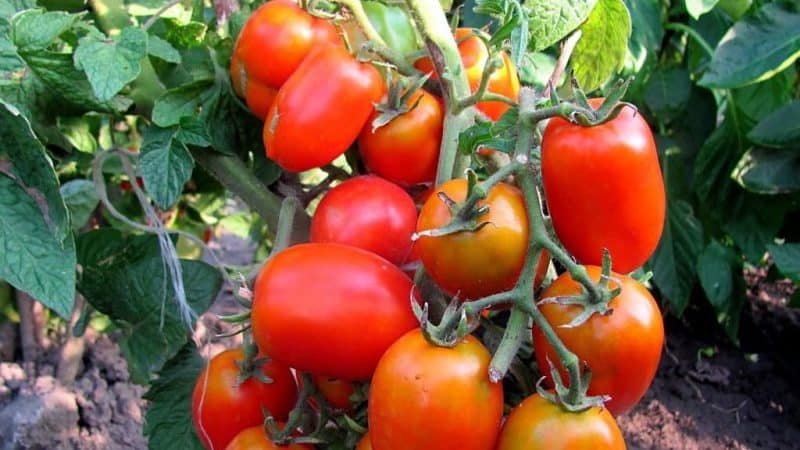
To obtain a rich and high-quality harvest, you need to know how to properly shape tomatoes. This concept includes pruning leaves and shoots. There is no need to pinch the bunches of low-growing tomatoes, because they stop growing on their own, and all the minerals go towards ripening the crop.
Trim the leaves before flowering begins. They begin 10 days after planting the seedlings. Leaves are removed gradually - the plant experiences stress. It’s best to use 2-3 sheets, no more than 2 times a week. Tear with an upward motion, otherwise you can snag the skin from the trunk and cause additional stress to the plant.
The lower leaves must be completely removed: this improves air exchange. It is recommended to pick them off under each cluster as soon as small green tomatoes appear on the branch.
By the end of summer, when the tomatoes stop bearing fruit, all leaves are removed so that energy can be used to ripen the fruit.
Removing leaves also prevents tomato diseases, insect pests that feed on the leaves. Like pinching, pruning leaves is best done in the first half of the day.
Each climate has its own nuances for growing low-growing tomatoes. For example, in the southern regions of Russia, where there is a lot of sun, the leaves of tomatoes growing in open ground are removed as needed. Don't forget that they protect the fruits from sunburn. And, conversely, in the north, where there is little sun, it is better to remove the leaves immediately, since they create shadow.
Important! Remove blackened, yellow or spotted leaves. They may be affected by disease or pests. In hot weather, cover the plantings with a layer of white spunbond to protect the plants from burns.
Caring for low-growing tomatoes
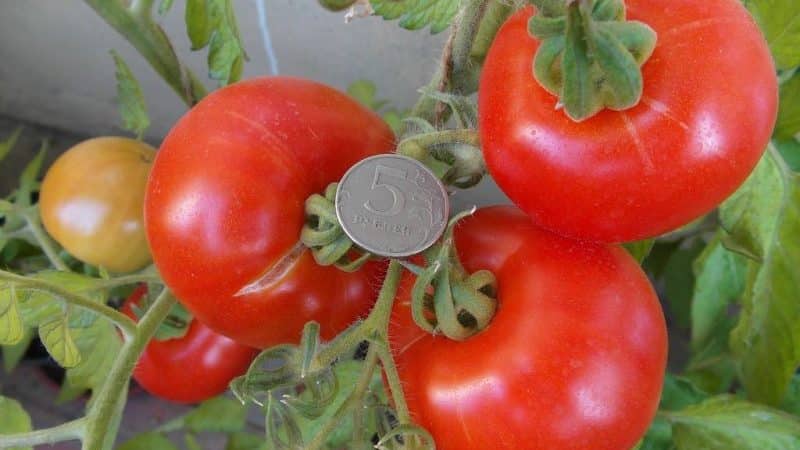
You should not water tomatoes often.In dry weather this is done 2-3 times a week. On cloudy days - 1 time. Of course, it is worth looking at the condition of the soil and the plant. Helps retain moisture mulching. If the mulch lies in a dense layer, then weeding often will not be necessary.
Tomatoes are fed with 2 liters of ash poured with 5 liters of boiling water. When the solution has cooled, add water to 10 liters, add 10 g of boric acid and 10 ml of iodine. We insist for a day. After this, dilute it another 10 times. We water the plant with this fertilizer after the ovaries form. For one bush - 1 liter.
Tips and tricks
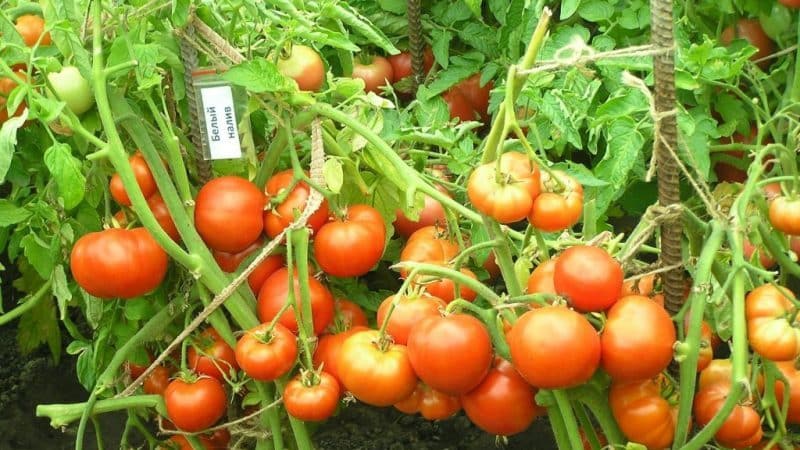
To ensure the best care for your tomatoes, carefully read the instructions on the seed package. Buy products from reputable and trusted manufacturers.
Water the tomatoes “at the root” - do not pour water on the leaves. In hot weather they will get burned, in cloudy weather the risk of late blight will increase.
It is best to make a small depression not far from the trunk or organize drip irrigation: this way the roots will not be damaged. Organize regular ventilation in greenhouses. Thanks to this, the plants will be pollinated, and the risk of becoming infected with late blight will be reduced.
Use only warm water. Otherwise, the plants will get sick.
Conclusion
For inexperienced gardeners or those who do not want to waste a lot of time caring for plants, low-growing varieties are most suitable. They do not require much trouble and forgive many mistakes for beginners. The main thing is to follow the recommendations: pinching tomatoes, trimming leaves, regular watering, fertilizing and ventilating greenhouses. With proper care, you can enjoy the harvest already in mid-summer.